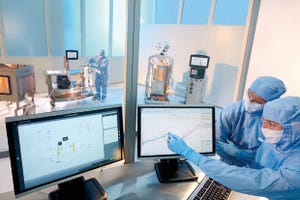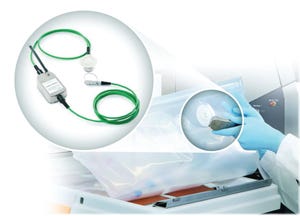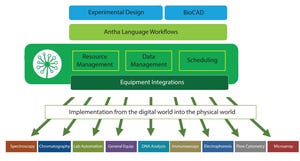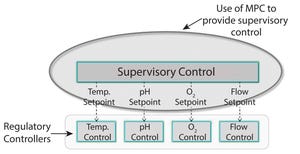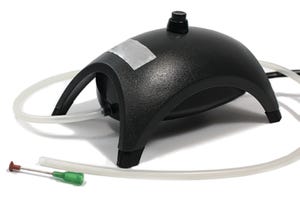November 2017 Featured Report
Advanced sensors, analyzers, and software have enabled manufacturers to achieve high levels of monitoring and control (thus a better understanding) of their processes. (WWW.SARTORIUS.COM)
Attendees at this year’s Biotech Week Boston (24–28 September) had the opportunity to participate in several preconference symposia on the first day, including one on advanced control strategies for bioprocessing and biomanufacturing. Chaired by
William Whitford
(GE Healthcare), the session included presentations from Dan Kopec (Sartorius Stedim Data Analytics), Markus Gershater (Synthace), Jonathan Bones (National Institute for Bioprocessing), Robert Thomas (Loughborough University), Chris McCready (Sartorius Stedim Data Analytics), and Victor Konakovsky (Newcastle University). BPI has collaborated with conference organizer KNect365 to present three of those here in edited format.
Key points
included the rapid changes in the bioindustry that have brought on the need for expanded automation, monitoring, and control in...
Biomass measurement with BioPAT ViaMass system: Capacitance signal is proportional to viable biomass because only viable cells have undamaged membranes.
Simply put, the best way to control a critical process parameter (CPP) is to measure that specific parameter, integrate the live signal into your control system, and apply a smart feedback algorithm for an automated control loop. The challenge in doing this for bioprocesses has been due, in part, to the complex, highly dynamic, and variable nature of the process along with the lack of robust, scalable, and multiformat (single-use or multiuse) technologies that can monitor (in real time) such critical parameters (e.g., nutrients/metabolites and live cell concentration).
Other industries such as food and chemical have been conducting advanced automation of CPPs for decades. The apparent ease in which they do that may be due to the fact that those processes are binary or typically have a minimal number of changing components that are well defined. Ultimately...
Figure 1: Layers of the Antha software; workflows are detailed in the Antha language then compiled to low-level instructions by the AnthaOS before being pushed through drivers to directly interface with diverse lab equipment.
Synthace began as a bioprocess optimization company in 2011, spun out of University College, London. The company worked on multifactorial approaches with 15–30 factors simultaneously instead of seven or eight. The work investigated genetic strain engineering factors alongside process parameters, defining deep interactions between the way strains were designed and the way they were treated in bioprocesses. Those complex experiments gave unique insight into the complexities of biological processes, but they were exceptionally taxing to plan and carryout manually. Automation seemed to be a solution, but programming the liquid handling steps necessary for this type of experiment was similarly arduous.
Software for Integration and Control
Hardware for laboratory automation is exceptionall...
Figure 1: In the automation hierarchy, base level of regulatory control maintains process variables at setpoints (single-input-single-output, SISO) and PID or programmable logic control (PLC) methods. Model predictive control (MPC) provides supervisory control of future variable trajectories and final batch conditions. Advanced supervisory control allows base-level control setpoints to achieve quality or economic objectives (multiple-input-multiple-output, MIMO).
Automation hierarchy in bioprocess manufacturing consists of a regulatory layer, process analytics technology (PAT), and (potentially) a top-level model-predictive or supervisory layer. The regulatory layer is responsible for keeping typical process measurements such as temperature, pressure, flows, and pH on target. In some cases, spectral instrumentation in combination with multivariate analysis (MVA) can be configured to measure parameters such as glucose concentration. A cascade control structure can be set up when the nutrient flow setpoint ...
Figure 1: The IS-SP integration system allows operators to mount sensor spots to the inside wall of transparent containers. Here it is used to integrate a SP-CD1 carbon dioxide sensor in a shake flask.
Carbon dioxide (CO
2
) is an important parameter in microbial cultures because it can inhibit or stimulate growth under certain conditions. In our experiment, we monitored
Escherichia coli
diauxie growth phases online and focused on dissolved CO
2
(dCO
2
) and oxygen readings. We assessed diauxic growth in medium containing glycerin and glucose online with the SFR vario system (from PreSens), which optically measures oxygen, pH, and biomass in an Erlenmeyer flask. The shake flask contained an oxygen sensor spot and an optical CO
2
sensor to evaluate sensor performance for online dCO
2
monitoring in microbial culture. We determined pH, substrate concentrations, and optical density with offline measurements. Online readings showed the characteristic course of diauxic
E. coli
growth.
Oxygen and CO
2
me...
Subscribe to receive our monthly print or digital publication
Join our 70,000+ readers. And yes, it's completely free.
